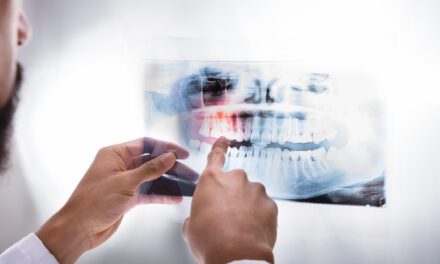by Marc Bernard Ackerman, DMD
 |
Orthodontics has enjoyed a century of tremendous growth and prosperity. What was once a luxury service proffered to the wealthy by a small cadre of specialists has become a basic service offered to the masses by a legion of nonspecialists and specialists. While there are still some first-generation orthodontic patients entering our practices, the vast majority of our patients today are well-informed second-, third-, or fourth-generationpatients. In light of some alarming new data suggesting a decline in the number of new case starts in orthodontic specialty practices,1 we need to critically assess whether or not the traditional definition of orthodontics and the model of “orthodontics should be delivered by orthodontists only” mesh with the needs and desires of current and future patients.
In a seminal article published in 1965, Theodore Levitt presented the concept of the product life cycle.2 Products or services are introduced, grow, mature, and ultimately decline. New products or services entering the introduction phase of the cycle have high production and marketing costs but garner only modest sales, resulting initially in low or nonexistent profits. Over time, profits increase and are positively correlated with sales during the growth phase as more of the market begins trying and adopting the product or service. As the product or service reaches maturity, profits for the initiating firm (or specialty) often do not keep pace with sales because of competition in the market. At this point, the seller may be forced to “remarket” the good or service, which may include strategic decisions related to price, quality, or capital outlays on advertising or sales promotion just to maintain market share. If the seller is unsuccessful in remarketing and sales begin to decline, a decision must be made to either: 1) drop the product or service; 2) alter the product or service; 3) seek new uses for the product or create additional services; 4) seek new markets; or 5) continue on the same course. The classic operational definition of orthodontic services delivered by orthodontists is “we move teeth to make your mouth healthy.” This paradigm has reached maturity and unfortunately is advancing toward decline. However, by redefining and then marketing a new and relevant Orthodontics version 2.0, we will be able to reposition our services into the profitable growth phase of the product life cycle.
 |
Since our professional services do not possess many attributes that a consumer can competently evaluate before making a purchase, there is a tremendous amount of buyer uncertainty involved in purchasing orthodontic services. As well, the prevailing view that orthodontists only straighten teeth limits service differentiability and makes it difficult for our targeted consumer to see the benefit of being serviced by a specialist. With a lack of scientific evidence and a lack of cultural support3 for the notion that patients seek orthodontic treatment because it improves oral health,4 it is time that we jettison this anachronistic message and recognize the concept that orthodontics is all about enhancing appearance.5 The road to regaining competitive advantage requires our employing an innovative marketing strategy called breakaway positioning, which will create a new brand of orthodontics and position it within a differentcategory in the market.6
Products and services convey their membership in a specific market category though their design, distribution (location), promotion, and pricing. Consumers take cues from this marketing mix and mentally place the offering in a specific market category.The goal of breakaway positioning is to have consumers perceive the product or service in an altogether different category, rather than seeing it as an alternative to others in its present category. A fantastic example of breakaway positioning is Swatch. Before Swatch introduced its line of watches in the early 1980s, Swiss watches were marketed as fine jewelry. Swatch defined its product not as a fine timepiece but as an inexpensive, fun fashion accessory. With this breakaway positioning, Swatch disrupted the watch category, created a fashion accessory subcategory, and became the best-selling wristwatch of all time.6 Orthodontics could re-enter the growth phase of the product life cycle by positioning its professional services in the appearance enhancement category along with other successful medical subspecialties such as facial plastic surgery and laser dermatology. Orthodontics has enjoyed a century of growth and prosperity, and with a little help from marketing, there is no reason why it cannot enjoy another 100 years of success.
Marc Bernard Ackerman, DMD, is an associate professor and director of the fellowship in orthodontic clinical research at Jacksonville University School of Orthodontics. He can be reached at /em>
References
- Keim RG, Gottlieb EL, Nelson AH, Vogels DS III. 2007 JCO orthodontic practice study: Part 3 practice growth and staff data. J Clin Orthod. 2007;41:739-748.
- Levitt T. Exploit the product life cycle. Harvard Business Review. November/December 1965:81-94.
- Robertson SC. Ten things your orthodontist won’t tell you. Smart Money: The Wall Street Journal Magazine of Personal Business. 2004:122-124.
- Bollen AM, Cunha-Cruz J, Bakko DW, Huang GJ, Hujoel PP. The effects of orthodontic therapy on periodontal health: a systematic review of controlled evidence. J Am Dent Assoc. 2008;139:413-422.
- Ackerman MB. Enhancement Orthodontics: Theory and Practice. Ames: Blackwell Munksgaard Publishing, 2007.
- Moon Y. Break free from the product life cycle. Harvard Business Review. 2005:87-94.










